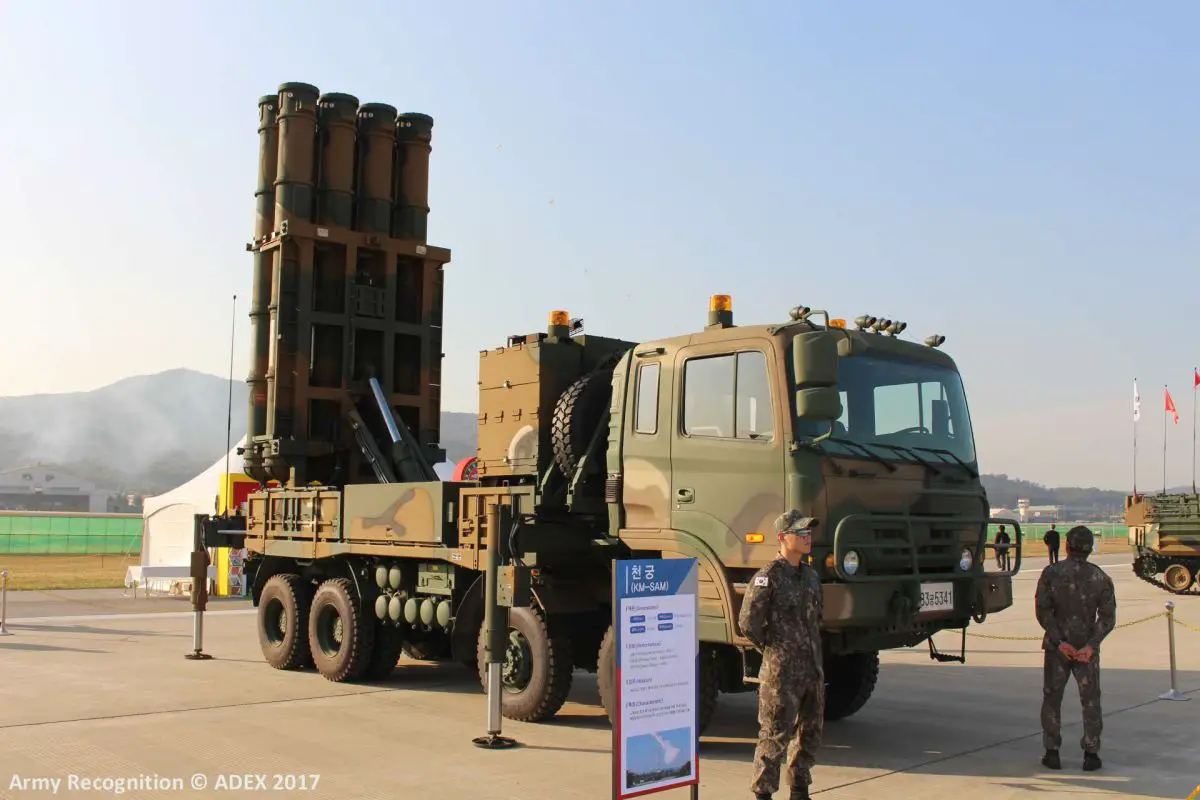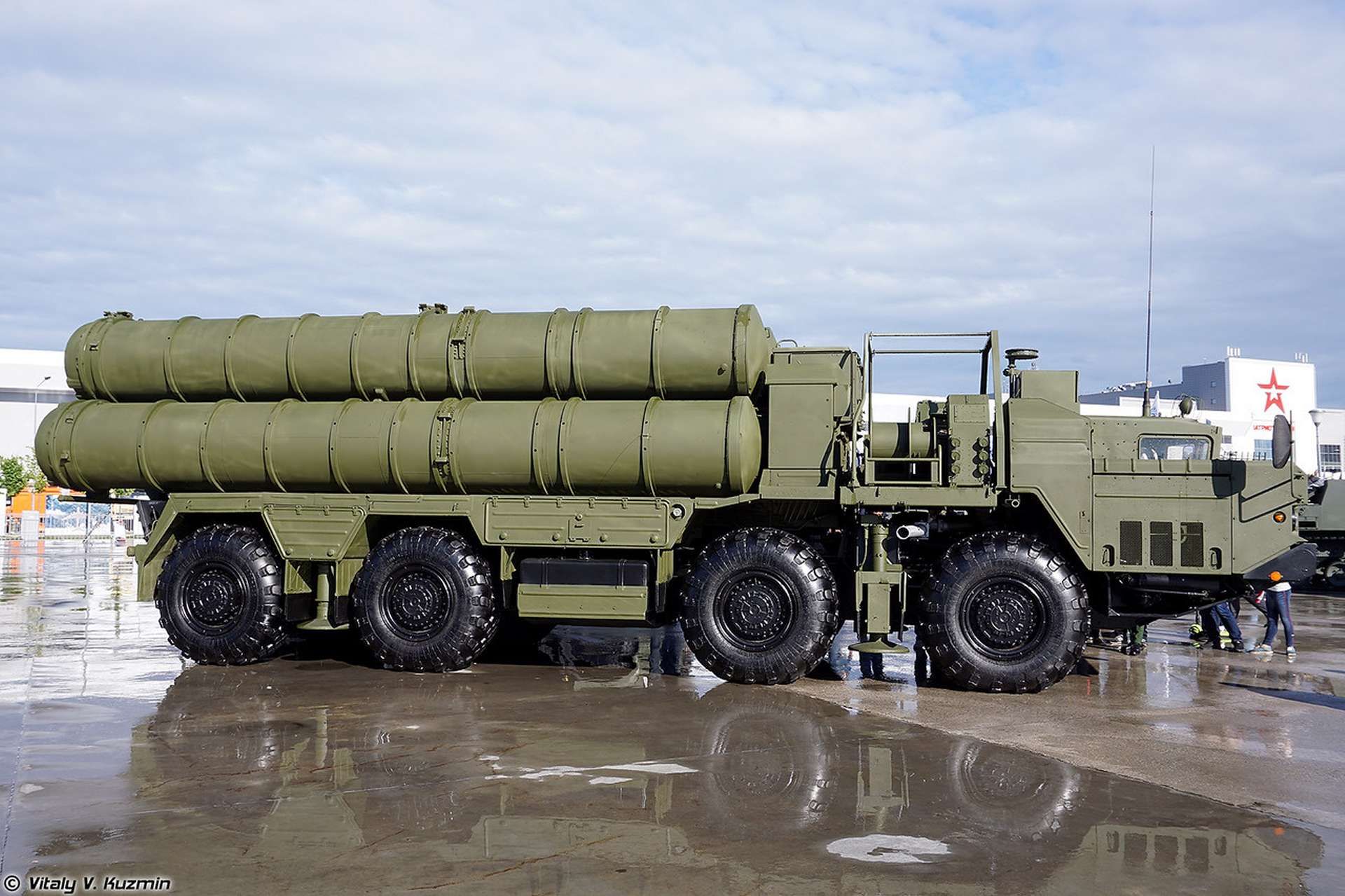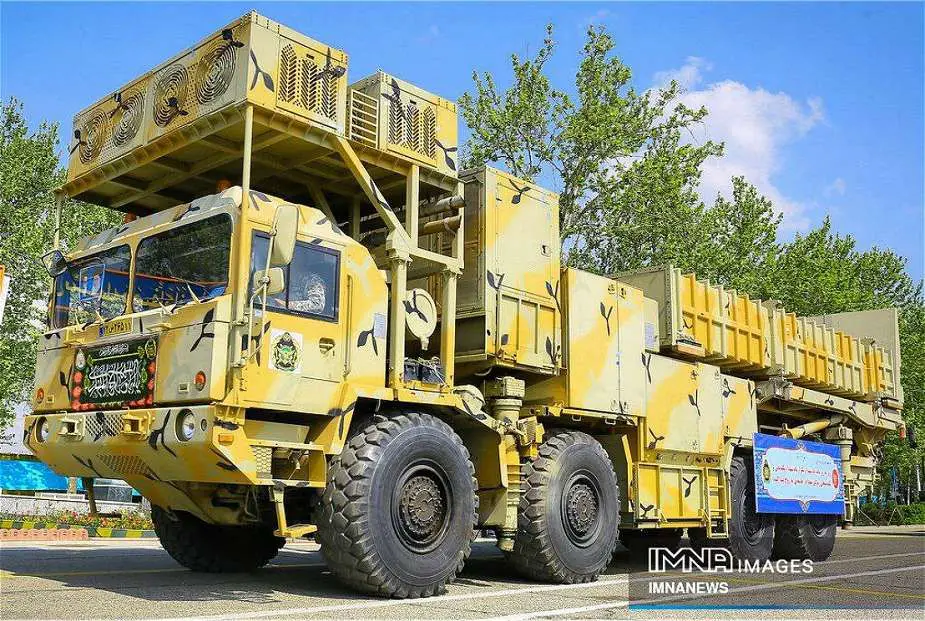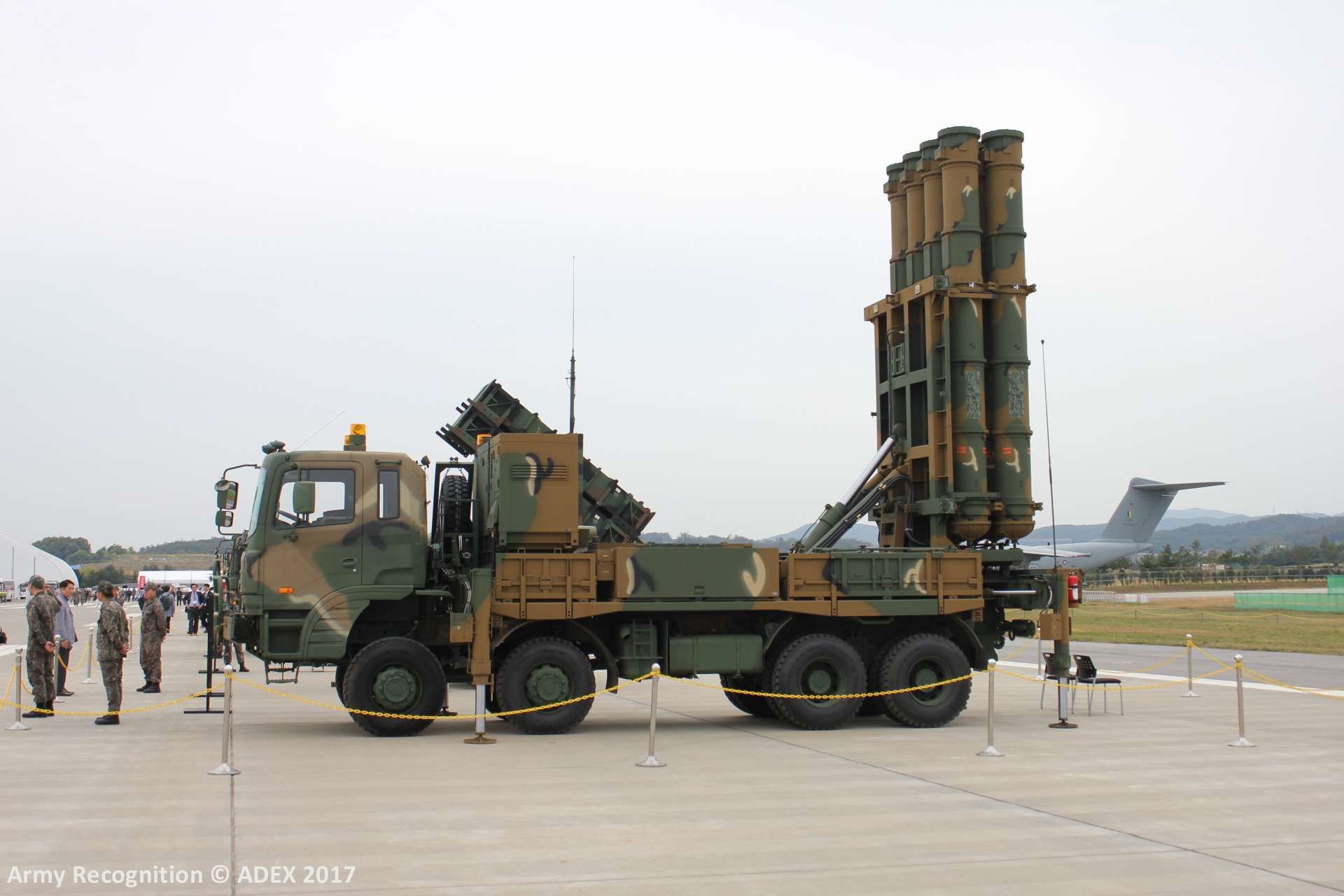Breaking News
Iraq to purchase eight South Korean M-SAM air defense systems worth $2.63 billion.
According to Defense Arabic on September 9, 2024, Iraqi Defense Minister Thabet Al-Abbasi announced that the contract for the South Korean Cheongung-II (M-SAM II) air defense missile system has been finalized and will be signed next week. According to Heo Baek-yoon, the contract involves eight batteries of this system, also known as the "Korean Patriot," and is expected to be worth around 3.5 trillion Korean won, or approximately $2.63 billion. This marks another step in expanding South Korea's defense exports in the Middle East, following previous deals with the United Arab Emirates (UAE) and Saudi Arabia.
Follow Army Recognition on Google News at this link

The KM-SAM is part of a multi-layered defense strategy, targeting both aircraft and ballistic missiles with guidance systems that combine inertial navigation, midcourse updates, and terminal active radar homing. (Picture source: Army Recognition)
Al-Abbasi also mentioned new agreements aimed at developing and upgrading the Iraqi army's artillery, including a contract for the French CAESAR 155mm self-propelled howitzer and plans to modernize the M1A1 Abrams tanks. He added that under Prime Minister Mohammed Shia al-Sudani, Iraq's approach to military procurement has shifted, with technical committees enabling flexible payment terms for weapons contracts spread over eight years to minimize the impact on the national budget.
Iraq has faced challenges in maintaining its Russian military equipment, such as the Mi-17 helicopters, which are critical for operations against the Islamic State. These helicopters are set to be replaced by 12 Airbus H225M Caracal helicopters. Due to these difficulties, Iraq is considering alternative suppliers, including the United States. However, the U.S. might be reluctant to provide advanced air defense systems, particularly if Iraq insists on the withdrawal of U.S.-led coalition forces. Additionally, there is domestic opposition in Iraq from Iran-backed factions against acquiring U.S. systems, especially if the deal involves air defenses for the autonomous Kurdistan region.
Iraq's interest in air defense systems follows its acquisition of medium-range Pantsir-S1 systems from Russia in 2014. In subsequent years, Iraqi officials expressed interest in potentially acquiring advanced S-300 or S-400 long-range missile systems from Russia. However, since the Russian invasion of Ukraine in February 2022, the reliability of Russian weapons and parts supplies has diminished, complicating Iraq's options.

Since the Russian invasion of Ukraine in February 2022, the reliability of Russian weapons and parts supplies has diminished, complicating Iraq's options for new air defense systems. (Picture source: Vitaly Kuzmin)
Moreover, any significant purchase of Russian military equipment could expose Iraq to potential sanctions under the U.S. Countering America's Adversaries Through Sanctions Act (CAATSA), as happened with Turkey's purchase of S-400 systems.
France has already provided Iraq with long-range Thales Ground Master 403 (GM403) air surveillance radars and might be open to selling additional air defense systems. Potential options include French Mistral or Crotale short-range missiles, which could complement Iraq’s existing systems, or the longer-range SAMP/T system, which can counter ballistic and cruise missiles.
Iran has also expressed a willingness to support Iraq's air defense needs and proposed joint air defense drills with allied states. Iran has developed systems like the Bavar-373, which it claims is comparable to the Russian S-400. However, a decision by Iraq to procure Iranian systems could face opposition from the U.S., particularly if Iranian personnel are involved, which could complicate coalition air operations in future conflicts.

A decision by Iraq to procure Iranian air defense systems, such as the Bavar-373, could face opposition from the U.S., particularly if Iranian personnel are involved, which could complicate coalition air operations in future conflicts. (Picture source: IMNA News)
Previously, on June 2, 2024, it was reported that Iraq had requested to purchase eight batteries of the M-SAM II air and ballistic missile defense system for approximately $2.56 billion. Discussions for this deal began during the visit of Iraq's Defense Minister, Thabet Mohammed Al-Abbasi, to his South Korean counterpart on March 21, 2024, to discuss military cooperation. During this visit, the acquisition of the M-SAM II surface-to-air missile systems was a key topic, and negotiations have since continued towards finalizing a contract.
Reports indicate that the Iraqi side expressed interest in the prompt delivery of three M-SAM II batteries, to which South Korea responded by indicating that two batteries could be delivered first. A representative from South Korea's Defense Acquisition Program Administration (DAPA) confirmed that negotiations are in their final stages, with South Korean companies working to complete the remaining details.
The KM-SAM (Korean Medium-range Surface-to-Air Missile), also known as Cheolmae-2 or Cheongung, is a South Korean missile defense system developed by the Agency for Defense Development (ADD) in collaboration with Russia's Almaz-Antey and Fakel, incorporating technology from the 9M96 missile used in the Russian S-350E and S-400 systems. Development began in 2001, leading to the completion of Block-I missiles by 2011 and Block-II by 2017, with Block-III set to begin in 2024. Designed to replace the older MIM-23 Hawk batteries in South Korea's missile defense architecture, the KM-SAM is part of a multi-layered defense strategy, targeting both aircraft and ballistic missiles with guidance systems that combine inertial navigation, midcourse updates, and terminal active radar homing.

Development of the M-SAM began in 2001, incorporating technology from the 9M96 missile used in the Russian S-350E and S-400 systems. (Picture source: Army Recognition)
The KM-SAM has been deployed to intercept a range of aerial threats, including ballistic missiles. The Block-I version, which began deployment in 2016, has an operational range of 40 km and a flight ceiling of 15 km, while the Block-II version, in service since 2021, extends the range to 50 km and the ceiling to 20 km, reaching speeds up to Mach 5. The system can engage up to six targets simultaneously and includes countermeasures against electronic warfare. It was deployed following a series of operational tests, and its deployment near sensitive areas like the maritime border with North Korea highlights its role in South Korea's regional defense strategy.
The Republic of Korea Air Force currently operates 19 KM-SAM batteries, with six additional units on order. Internationally, the system has been purchased by Saudi Arabia, which ordered ten Block-II batteries in a deal valued at $3.2 billion, and by the United Arab Emirates, which ordered twelve batteries in a deal worth $3.5 billion. These transactions represent some of the largest defense export deals for South Korea and reflect an increasing interest in the KM-SAM system for air defense capabilities. The United Arab Emirates' acquisition will be partially produced domestically, illustrating collaborative production arrangements.


























